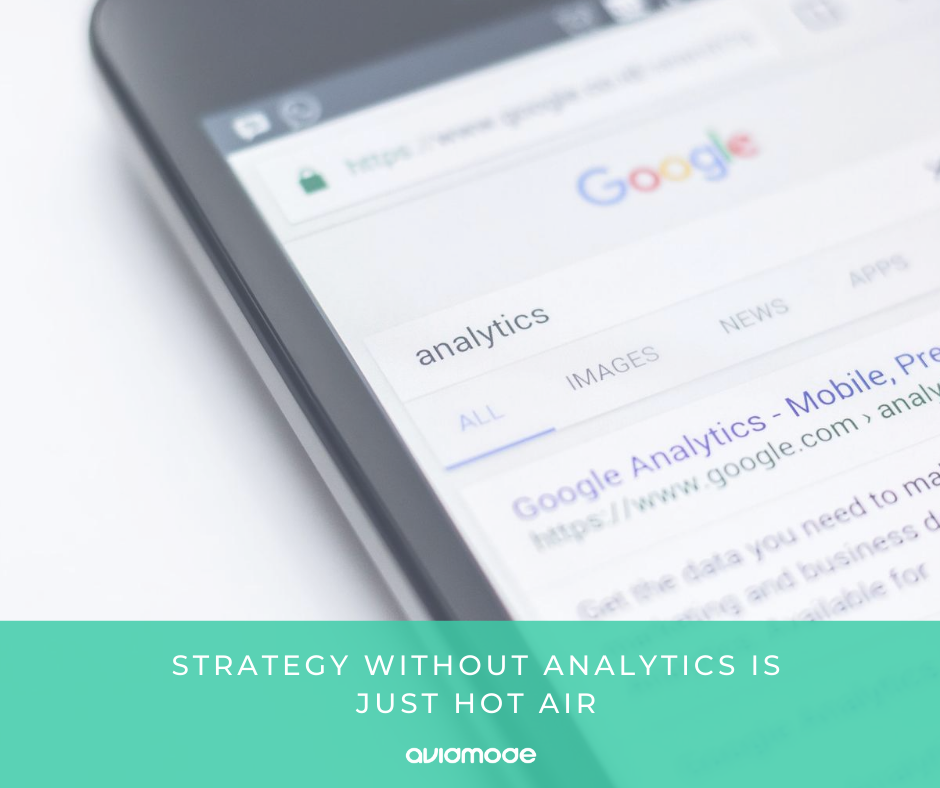Strategy without analytics is just hot air!
So, you’ve done it! You’ve created your very own wonderful new website, complete with eye-catching imagery and compelling copy that really speaks to your target audience. Phew! Time to sit…

So, you’ve done it! You’ve created your very own wonderful new website, complete with eye-catching imagery and compelling copy that really speaks to your target audience. Phew! Time to sit back and relax now that the hard work is done? We hate to break it to you, but unfortunately not!
Your virtual shop window
Think of your website as your virtual shop window. When you walk down the high street at Easter, you wouldn’t expect to see Christmas decorations in the window (unless it’s one of those magical year-round ones. We love those!). Well, it’s the same for your website. It’s about constantly monitoring, reviewing and tweaking that carefully-created website that you spent so much time getting just right, to make sure that it’s up-to-date and working as hard for you as it possibly can. It’s about checking what’s doing well and what isn’t; with the aim of securing maximum return on your investment and ultimately reaching your business goals.
Getting more from your website
People want so much more from a website these days. It’s no longer really enough to have a website that simply delivers information. People want to engage, converse, enquire, read relevant content, and sometimes purchase products and services directly. With this in mind, you don’t want to put all that effort into creating something fantastic and then leave it uncared for in a digital abyss!
Regardless of the type or size of your business, your customers are looking for a personalised and engaging experience, so having the right kind of data to hand is super important so that you can understand their behaviour.
A comprehensive overview of your marketing efforts
We know that it can be overwhelming. Even the word ‘analytics’ may bring you out in a cold sweat. But let’s get back to basics. Analytics are really only a way that you can track and analyse performance, allowing you to measure how well things are going with your digital marketing strategy. Think of it this way and it’s not quite so scary and overwhelming!
So, where do you start and what should you be looking at?
There are many types of digital marketing analytics to consider as part of your wider business strategy, but in this blog, we’re going to concentrate on website analytics.
According to Tim Ferris,
“Vanity metrics: good for feeling awesome, bad for action.”
First of all, please don’t get hung up on those pesky ‘vanity metrics.’ Vanity metrics are metrics that you can quite happily track (and they may make you feel temporarily amazing!) but they don’t really help you to make informed decisions that will significantly benefit your business.
Instead, you want to be tracking the actionable metrics that actually tell you what you need to know about your business so that you can make more informed decisions about how to spend that all-important marketing budget.
Here are just a few pointers to start you on your analytics adventure!
If you haven’t already, please start using Google Analytics. It’s super-easy to set up, it’s completely free and will provide you with a fantastic amount of data, so you can learn more about how your visitors interact with your website and what you can do to improve their experience to make it even more appealing.
Website traffic: Where are your visitors coming from and what are they doing when they land on your website? Which pages are generating the most traffic? Are you attracting a certain gender or demographic? If for example, your ideal client is a female business owner in a certain age range, are you attracting her?
On page time spent: How long are visitors staying on your website for? If it’s not that long on some pages, ask yourself why that could be? Have they found what they’re looking for really easily and are converting to leads, or even better customers, or has something put them off?
Click rate: Google Analytics allows you to track actions such as clicks on specific links and particular buttons on your website, which is particularly helpful when it comes to understanding how people are engaging with your content. You can also track links coming into your website, for example, from your social media platforms.
Load times: This is the average amount of time in seconds that it takes for a web page to load. It’s important to keep a close eye on this because if it takes too long, people may get fed up and head elsewhere. Maybe to a competitor and we certainly don’t want that! One of the main things that can affect load time is file size, so if you need to, shrink the size of your images, and if you’re a WordPress user, look into a plugin that will cache the latest version of your pages.
Pages per visit: This tells you how many pages were viewed by a visitor to your website before they left. People can land on your website from lots of different places, so once they’ve arrived, you want to make sure that it’s really easy for them to navigate to other pages of interest, and hopefully take some positive actions, such as an enquiry or better yet a sale.
If you need any assistance in setting up your Google Analytics or your not sure what to make of the data you’re getting, head on over to our contact page and set up a meeting with us!
If you enjoyed reading this blog post, check out similar ones in the sidebar. Feel free to get in touch with to chat about your latest project ideas - we love a good excuse for more tea.

